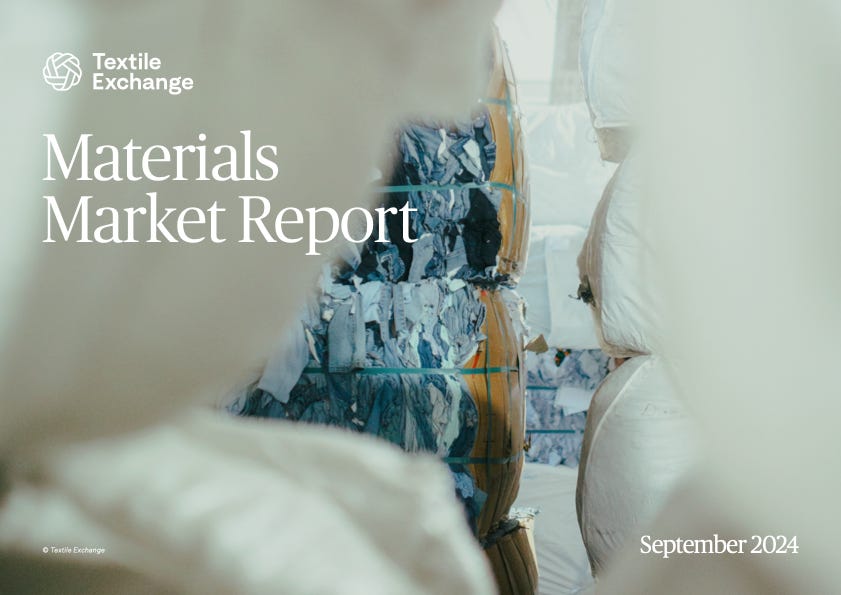September in Fashion, Condensed.
Inside luxury's Italian sweatshops, how AI is making fashion pollution worse, and four new reports on fashion textiles, pay equity, regenerative farming and more.
Hello there,
September has been a month of conflicting PR for Big Fashion. For those working in the more glamorous end of the industry, September probably included visiting, or at least monitoring, the SS25 traveling circus as it made its bi-annual lap around New York, London, Milan, and Paris.
Fashion week reinforces the well-crafted veneer of desirability, premium quality and craftsmanship that are synonymous with luxury. This is especially true in Italy, where you’ll find both the headquarters and a lot of production for big brands. It pays to pour millions into fashion week, because the investment drives business and strengthens the reputation of “Made in Italy”.
Meanwhile, on the other end of the fashion spectrum (the end where the activists, researchers, reporters, and climate scientists are prising open the cracks in the shiny veneer), a series of investigations came out that paint a pretty un-glam picture of Italy’s luxury sector.
Sarah Kent’s piece for BoF on the country’s fashion manufacturers revealed sweatshop conditions in several luxury brand’s Italian supply chains. A report by Global Fashion Agenda and PwC explored the pay equity gap in the sector, which it estimates will take 50 years to close. They follow a probe by the Italian Competition Authority in July which discovered that Dior’s almost $3,000 bags cost the brand just $57 to make.
When some of us are banging the ESG drum and others are buying tickets for the fashion circus, it’s clear that there is still a serious misalignment of priorities and values within the sector. I find the disconnect between these two realities so frustrating because we all work in the same industry and have access to the same information, yet we’re pulling in different directions. As a result, business-as-usual prevails to the benefit of absolutely no-one.
Both the fashion fanatics and the sustainability fun-sponges (myself included) are guilty of operating in echo chambers. How can we meet in the middle, share knowledge, and find solutions that everyone can get behind to drive impact? As usual, I don’t have the answers, only more questions. Typical journalist!
On that note, see you next month.
Meg
Things I Didn’t Write
More Than 40 Fashion Suppliers Have Rolled Back Climate Commitments. What’s Going On? by Olivia Rockeman for Vogue Business
Shein Workers Have Had It—and They’re Going Public by Louise Matsakis And Johanna Costigan for Wired
Where Does The UK’s Fast Fashion End Up? I Found Out On A Beach Clean In Ghana by Fleur Britten for The Guardian
Nike Shareholders Vote Against Proposal On Workers' Rights by Ananya Mariam Rajesh and Nicholas P. Brown
Inside Luxury’s Italian Sweatshops Problem by Sarah Kent for Business of Fashion
‘Workers Must Be Allowed To Speak Up’ by Aliza Rahman for the Daily Star
Shein Is Officially The Biggest Polluter In Fast Fashion. AI Is Making Things Worse by Sachi Kitajima Mulkey for Grist
101: A Guide to Sustainable Fashion by Lauren Cochrane for Atmos
The To-Do List
Fashion’s Plastic Paralysis: How Brands Resist Change and Fuel Microplastic Pollution by Changing Markets Foundation
Changing Markets has analysed and surveyed 50 global brands about their use of synthetics and plans to phase out fossil-fuel derived materials. Interestingly, they say that “the level of corporate secrecy has more than tripled since our surveys began in 2021. More than half the companies (54%, 27 brands) failed to respond to the survey in part or full, compared to 44% in 2022 and 17% in 2021.”
Speak Volumes Campaign by the OR Foundation
It’s estimated that fashion produces somewhere between 80 - 150 billion garments every year. The huge gap between these two numbers is because the vast majority of fashion brands don’t disclose how many products they make each year. Unlike carbon emissions or other complex data points, they actually DO know this number, because they’re the ones ordering it all. Speaks Volumes is a campaign demanding that brands disclose production numbers — you can sign the petition by clicking the button below.
Regenerative Fashion Futures: Towards a Just Transition
In September, People Tree and Fashion Declares founder Safia Minney released the Regenerative Fashion & the Just Transition report and documentary, exploring responsible farming and ethical manufacturing in India. Watch the documentary above or read the report at the button below.
Unpacking Pay Equity in Fashion: Italy by Global Fashion Agenda and PwC
Over 80% of Italy’s fashion manufacturers are micro-enterprises with fewer than 10 employees, making them exempt from Italian and European gender pay & equality regulations. This report has some fascinating information about this pervasive issue in the world’s leading luxury manufacturing country.
Materials Market Report 2024 by Textile Exchange
The Textile Exchange Materials Market report is a comprehensive guide to the textile sector. This year, the report shows that fashion’s reliance on virgin synthetics has grown while recycled polyester market share decreased. As fashion’s most-used material, making up 57% of global annual production, this is a concerning trend. Read more at the button below.









Fellow sustainability fun-sponge here 👋 (Though I started on the other side!) I really like your point about finding ways to build bridges between the two. I share your frustration, but I find a lot of hope in newer generations of design (and journalism, marketing, photography, modelling etc etc etc) talent with sustainability much more built-in. The challenge lies in the old guard 👀